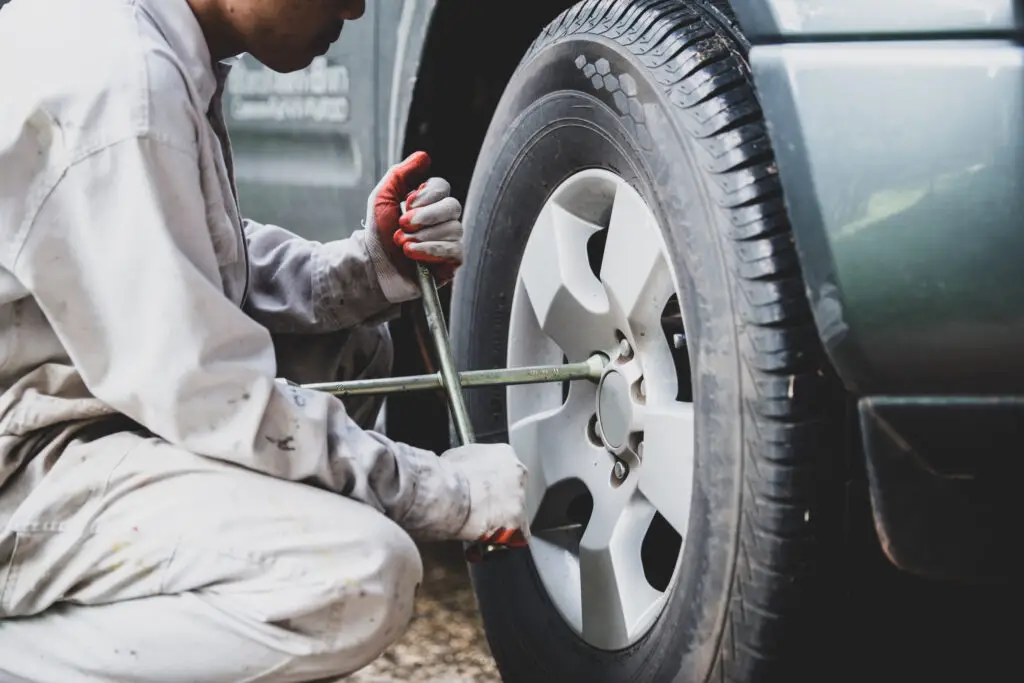Are you wondering how long tires should last for a brand-new car? When you drive off the lot in a brand-new car, everything feels fresh and ready for the road, including the tires. But how long should those original tires last?
Understanding tire lifespan is essential for maintaining safety, performance, and cost-effectiveness. This blog post will dive into the factors that influence tire longevity and provide tips to maximize their lifespan.
Average Lifespan of Tires on a New Car
The tires on a brand-new car, also known as original equipment (OE) tires, typically last between 25,000 to 50,000 miles. However, several factors influence how long they will actually last, including:
- Driving habits: Aggressive driving, such as hard braking and rapid acceleration, can wear out tires faster.
- Road conditions: Potholes, rough terrain, and debris can shorten tire life.
- Maintenance practices: Proper care, including regular rotations, alignments, and air pressure checks, can extend tire life.
Factors That Affect Tire Lifespan
1. Tire Quality
The quality of the original tires varies depending on the manufacturer and vehicle model. Some brands prioritize performance or fuel efficiency over longevity, which can influence the expected lifespan of the tires.
2. Driving Environment
- Urban Driving: Frequent stops and starts in city traffic can cause faster wear on new car tires.
- Highway Driving: Tires generally last longer with steady speeds and smoother road conditions.
- Extreme Weather: Hot climates can cause faster tread wear, while cold conditions may lead to cracking or hardening.
3. Tire Maintenance
Regular maintenance plays a critical role in extending tire life:
- Tire Pressure: Underinflated or overinflated tires wear unevenly and degrade more quickly.
- Tire Rotation: Rotating tires every 5,000 to 7,000 miles ensures even wear.
- Alignment: Misaligned wheels can cause uneven tread wear, reducing lifespan.

How to Check Tire Wear
It’s important to monitor your tires regularly to ensure they’re in good condition. Here are a few methods:
1. The Penny Test
Insert a penny into the tread with Lincoln’s head facing down. If you can see the top of his head, it’s time to replace your tires.
2. Tread Wear Indicators
Most tires have built-in tread wear bars. If these bars are flush with the tread, the tires are worn out.
3. Visual Inspection
Look for cracks, bulges, or uneven wear patterns that indicate a problem.
When to Replace Your Tires
Even with proper care, all tires eventually need to be replaced. Here are some general guidelines:
- Tread Depth: Replace tires when the tread depth falls below 2/32 of an inch.
- Age: Tires older than 6-10 years, even if they have sufficient tread, may be unsafe due to rubber degradation.
- Performance Issues: If you notice reduced traction, longer braking distances, or frequent air pressure issues, it’s time for new tires.
Tips to Maximize Tire Life
- Drive Smoothly: Avoid aggressive starts, hard braking, and sharp turns.
- Maintain Proper Tire Pressure: Check tire pressure monthly and adjust as needed.
- Rotate Tires Regularly: Follow your vehicle’s recommended rotation schedule.
- Avoid Overloading: Excess weight can strain tires and cause premature wear.
- Store Tires Properly: If you use seasonal tires, store them in a cool, dry place.
Final Thoughts
The tires on your brand-new car should last anywhere from 25,000 to 50,000 miles( about 2 to 5 years), but their actual lifespan depends on quality, maintenance, and driving conditions. By taking care of your tires and staying vigilant about wear, you can maximize their life and ensure a safe, comfortable driving experience.
When it’s time to replace your tires, invest in high-quality replacements that suit your driving needs. Your safety and performance on the road depend on it.
Have questions about tire care or replacements? Let us know in the comment section—we’re here to help!
Discover more from Chikwem
Subscribe to get the latest posts sent to your email.